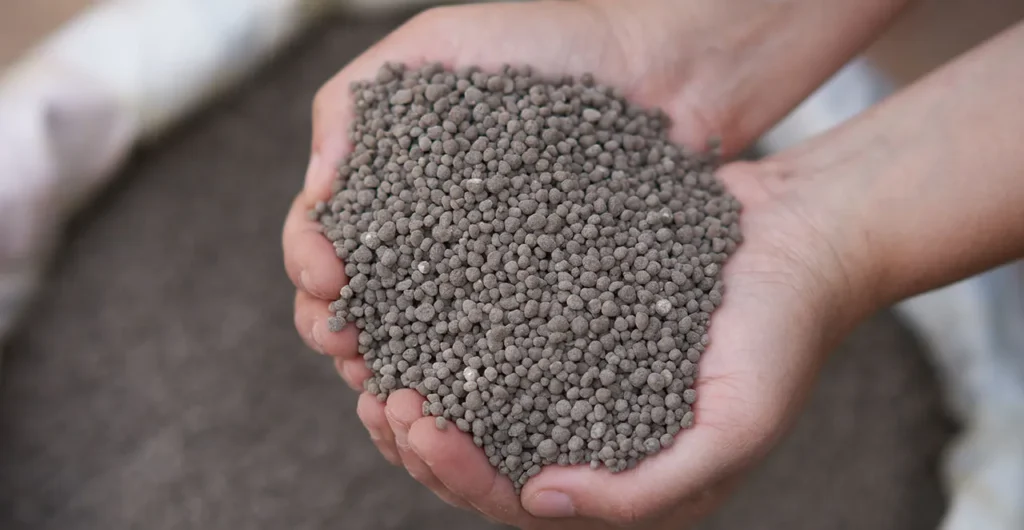
Phosphorus fertilizer is an essential component of modern agriculture, critical for root development, flowering, and fruiting in plants. As global food demand continues to rise, the importance of phosphorus in crop production cannot be overstated. However, the conventional use of phosphorus fertilizers presents significant challenges, including environmental degradation, resource depletion, and inefficient uptake by plants. Looking ahead, the future of phosphorus fertilizer will be shaped by innovations aimed at improving efficiency and sustainability while mitigating environmental concerns.
The Importance of Phosphorus in Agriculture
Phosphorus is one of the three primary macronutrients required for plant growth, alongside nitrogen and potassium. It plays a vital role in energy transfer within plants, root development, and the formation of DNA and RNA. Without adequate phosphorus, plants exhibit stunted growth, poor root systems, and lower yields. Farmers often apply phosphorus fertilizer to replenish soil nutrient levels and support high-yield agriculture.
Despite its significance, phosphorus is a non-renewable resource. Most commercial phosphorus fertilizers are derived from phosphate rock, primarily mined in countries like Morocco, China, and the United States. These reserves are finite, and concerns are growing over the long-term availability and geopolitical stability of supply chains.
Challenges with Conventional Phosphorus Fertilizers
Traditional phosphorus fertilizers, such as monoammonium phosphate (MAP) and diammonium phosphate (DAP), have several limitations. One of the main issues is the low availability of applied phosphorus to plants. In many soil types, phosphorus becomes immobilized through reactions with calcium, iron, or aluminum, rendering it unavailable to plant roots. As a result, plants typically absorb only 10–30% of the applied phosphorus fertilizer, while the rest remains locked in the soil or is lost to the environment.
This inefficiency not only reduces crop productivity but also contributes to environmental problems. Runoff from agricultural fields can carry excess phosphorus into nearby water bodies, causing eutrophication, harmful algal blooms, and dead zones in aquatic ecosystems. These issues have prompted researchers and policymakers to seek sustainable solutions for phosphorus management.
Emerging Innovations in Phosphorus Fertilizer Technology
To address these challenges, scientists and agricultural companies are developing innovative phosphorus fertilizer technologies that enhance uptake efficiency, reduce environmental impact, and promote long-term soil health. One promising approach is the development of controlled-release and slow-release phosphorus fertilizers. These products are designed to release nutrients gradually over time, synchronizing with the plant’s growth cycle and minimizing losses.
Another innovation involves the use of nano-phosphorus fertilizers. Nanotechnology allows for the encapsulation of phosphorus in nanoparticles that improve solubility, mobility, and absorption by plants. This increases the effectiveness of the fertilizer and reduces the amount needed, helping to conserve natural resources and decrease runoff.
Researchers are also exploring bio-based phosphorus fertilizers derived from organic waste materials. These include composted animal manure, bone meal, and sewage sludge that have been treated to recover phosphorus content. Using recycled phosphorus sources not only provides a renewable alternative to phosphate rock but also contributes to the circular economy in agriculture.
Role of Microbial Inoculants and Phosphorus-Solubilizing Bacteria
Biological innovations are playing a key role in the future of phosphorus fertilizer. One of the most exciting developments is the use of microbial inoculants, particularly phosphorus-solubilizing bacteria (PSB) and mycorrhizal fungi. These beneficial microbes help convert insoluble phosphorus compounds in the soil into forms that plants can absorb more easily.
Mycorrhizal fungi form symbiotic relationships with plant roots, extending their reach and increasing nutrient uptake. PSBs, on the other hand, release organic acids and enzymes that break down complex phosphorus compounds. Integrating these microbes into farming systems can enhance phosphorus availability, reduce dependency on synthetic fertilizers, and improve soil biodiversity.
Precision Agriculture and Smart Fertilization
The integration of digital tools and precision agriculture techniques is transforming how phosphorus fertilizer is applied. Through the use of soil sensors, satellite imagery, and data analytics, farmers can monitor soil phosphorus levels in real time and apply fertilizers only where and when needed. This site-specific nutrient management improves efficiency, reduces costs, and minimizes environmental risk.
Smart fertilizers embedded with sensors and IoT technology are also being developed to provide real-time feedback on nutrient release and plant uptake. These advanced products help farmers make informed decisions and fine-tune their fertilization strategies for optimal results.
Environmental Considerations and Policy Implications
While technological advancements in phosphorus fertilizer are promising, addressing environmental concerns requires a multi-faceted approach. One key area is improving nutrient stewardship practices. Farmers can adopt methods such as conservation tillage, buffer strips, and cover cropping to prevent phosphorus runoff and protect water quality.
Regulations and incentives play a critical role in promoting sustainable phosphorus use. Governments and agricultural organizations can support research, provide subsidies for adopting eco-friendly fertilizers, and implement guidelines for responsible nutrient management. Encouraging collaboration between scientists, policymakers, and farmers is essential for driving systemic change.
Another critical consideration is the global phosphorus cycle. Unlike nitrogen, which has a gaseous form and can circulate through the atmosphere, phosphorus is a closed-loop nutrient that tends to accumulate in soils and sediments. Recovering phosphorus from wastewater and recycling it back into agriculture is vital for closing the loop and ensuring long-term sustainability.
The Path Forward
The future of phosphorus fertilizer lies at the intersection of innovation, environmental stewardship, and global cooperation. As we confront the dual challenges of feeding a growing population and protecting natural ecosystems, rethinking how we use and manage phosphorus is imperative.
Advanced fertilizer formulations, microbial technologies, precision farming, and waste recovery solutions offer a glimpse of what’s possible. By investing in research, promoting sustainable practices, and raising awareness about phosphorus efficiency, the agricultural sector can transition toward a more resilient and responsible future.